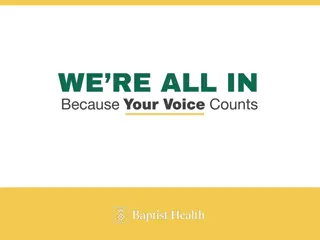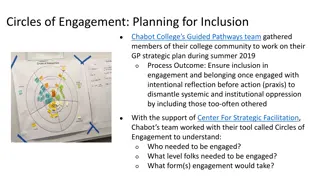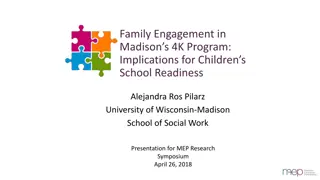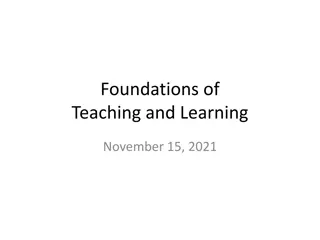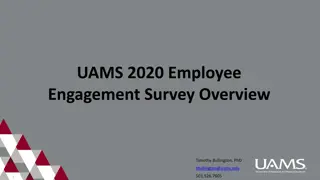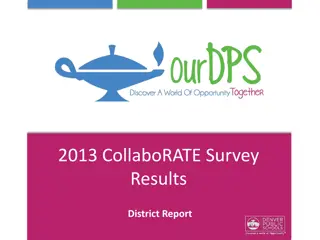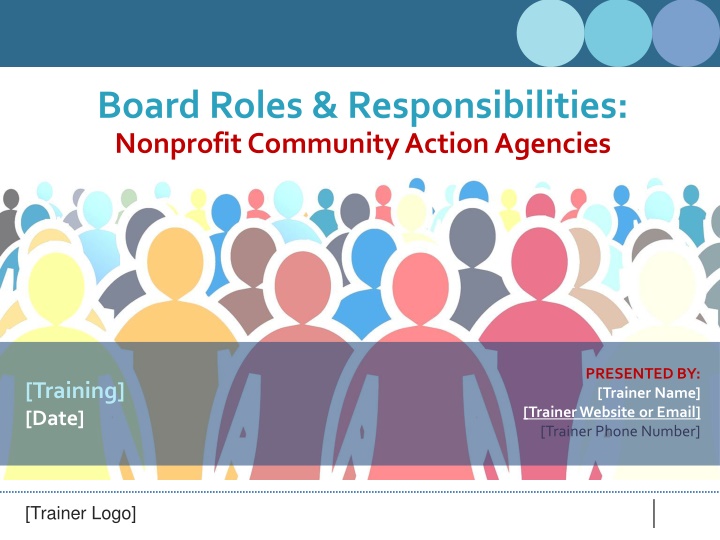
Effective Board Roles and Responsibilities for Nonprofit Community Action Agencies
Enhance your knowledge on the key responsibilities of board members in nonprofit community action agencies, including engagement, fundraising, and performance accountability. Learn how to increase board member engagement, handle internal and external responsibilities, and improve recruitment procedures for a more effective governance structure.
Download Presentation

Please find below an Image/Link to download the presentation.
The content on the website is provided AS IS for your information and personal use only. It may not be sold, licensed, or shared on other websites without obtaining consent from the author. If you encounter any issues during the download, it is possible that the publisher has removed the file from their server.
You are allowed to download the files provided on this website for personal or commercial use, subject to the condition that they are used lawfully. All files are the property of their respective owners.
The content on the website is provided AS IS for your information and personal use only. It may not be sold, licensed, or shared on other websites without obtaining consent from the author.
E N D
Presentation Transcript
Board Roles & Responsibilities: Nonprofit Community Action Agencies PRESENTED BY: [Trainer Name] [Training] [Date] [Trainer Website or Email] [Trainer Phone Number] [Trainer Logo]
This training material was created in collaboration with Community Action Program Legal Services, Inc. (CAPLAW) and the Community Action Partnership (Partnership). The publication was created by National Association of Community Action Agencies - Community Action Partnership in the performance of the U.S. Department of Human Services, Administration for Children and Families, Office of Community Services Grant Number 90ET0465. Any opinion, findings, and conclusions, or recommendations expressed in this material are those of the authors and do not necessarily reflect the views of the U.S. Department of Health and Human Services, Administration for Children and Families. 2
Key Board Responsibilities Mission Planning Engagement Generating Funds Performance Accountability 3
Key Board Responsibility Engagement 4
Engagement Scenario Jack, a recently retired school superintendent, joined the CAA board 10 years ago and continually gets re-elected to the private sector. He assumes he is on the board because the CAA operates a Head Start program. He is tired of attending community gatherings and interacting regularly with others he did it for over 30 years with his school job. He likes his fellow board members and makes a real effort to attend board meetings focused on early education matters, but doesn t worry if he can t make other meetings. Is Jack an engaged board member? Why or why not? 5
Internal and External Responsibilities With Board/ Organization Engagement With Stakeholders/ Community 6
Ways to INCREASE Engagement Connecting with Community Conducting Assessments Building Relationships Regularly Orienting & Training Strategically Recruiting 7
Board Selection Procedure Use board committee Recruit smartly & strategically Require applications Follow selection procedures 8
Recruitment Matrices Board Source & CAPLAW http://www.caplaw.org/resources/Self AssessmentDocuments/CAPLAW_Boa rdComposition%20Matrix_April2012.x ls https://boardsource.org/bo ard-recruitment-matrix/
Training & Orientation Exercise What Would You Do? List the five most pressing topics for a board member orientation. List the five topics that you think are essential to be covered in board trainings. List three methods for providing training to the board. 10
Training & Orientation Options Use a governance committee to work with executive director and designated staff to: Develop a comprehensive approach Identify topics, e.g., financial oversight, board operations, etc. Establish methods , e.g., webinars, in-person, etc. 11
CSBG Organizational Standards Board Orientation and Training CSBG Org. Standard 5.7 Org. has a process to provide a structured orientation for governing board members within 6 months of being seated. CSBG Org. Standard 5.8 Board members have been provided with training on their duties and responsibilities within the past 2 years. 12
Building Relationships Executive Director and Board Chair Establish expectations Keep communication lines open Frequency of check-ins Regular communication Priorities Identify and work to resolve differences in non-defensive ways Issues to communicate Communications style Sounding board/feedback Ways to support each other 13
Building Relationships Board Members/Executive Director Meet one-on-one with board members Periodic check-ins Provide board members with opportunities to develop their skills as board members Help board members get to know each other Encourage board members to be actively engaged at board meetings 14
Board Assessment Sample Excerpt 15
Board Assessment Process 1. Get your full board on board! 2. Establish a group of board members to oversee the process 3. Administer the assessment tool 4. Tabulate responses 5. Discuss results strengths, weaknesses 6. Establish a realistic action plan 7. Follow up and reassess! 16
Board Assessment Resources Decide on and use appropriate format/tool NH Center for Nonprofits, http://www.nhnonprofits.org/view/member-benefits/256 National Council of Nonprofits, http://www.councilofnonprofits.org/resources/resources- topic/boards-governance/board-member-self-assessment VirtualCAP, http://www.virtualcap.com/downloads/MPI/IN- CAA-Board-Self-Assessment.pdf (tool developed by Indiana Community Action Association) The Nonprofit Association of Oregon, https://nonprofitoregon.org/helpline_resources/Board- Assessment-Tool 17
Connecting with Community Exercise Fill in the Blank Empowering the low-income community Ex., our tripartite board _______________________________ Effectively advocating for the organization and its mission Ex., our tripartite board________________________________ Collecting and providing input on community needs Ex., our tripartite board________________________________ Developing and sustaining strategic partnerships and collaborations Ex., our tripartite board________________________________ 18
CSBG Organizational Standards Community Engagement CSBG Org. Standard 1.1 Organization demonstrates low-income individuals participation in its activities. CSBG Org. Standard 2.1 Organization has documented or demonstrated partnerships across the community, for specifically identified purposes; partnerships include other anti-poverty orgs in the area. CSBG Org. Standard 2.3 Organization communicates its activities and its results to the community. 19


